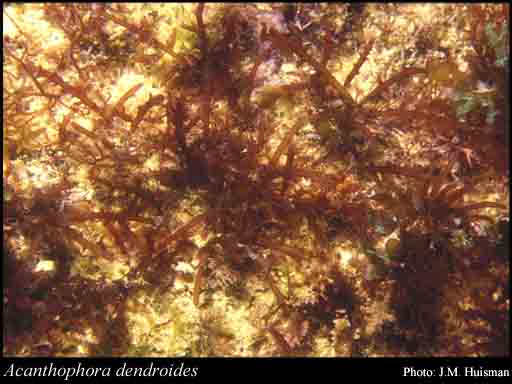- Reference
- Trans.Roy.Irish Acad. 22:538 (1855)
- Conservation Code
- Not threatened
- Naturalised Status
- Native to Western Australia
- Name Status
- Current

Scientific Description
Habit and structure. Thallus erect and with sprawling stoloniferous axes, to 12 cm tall, red to purple. Primary axes percurrent, with lateral branches generally every 2–3 mm, these similar to primary axes or remaining simple and short, to 10 mm long. All branches with conical spines, these more numerous on lateral branches, 500–600 μm long, upwardly directed near the branch apices, becoming more perpendicular lower down. All axes terete; primary axes 0.8–1.0 mm diam.; secondary axes and short lateral branches c. 0.5 mm diam. Lateral branches slightly basally constricted (often inconspicuous in dried material). Outer cortical cells longitudinally elongate, 100–200 μm long, 10–30 μm wide, in vaguely linear series with longitudinal pit connections between cells.
Reproduction. Reproductive structures not observed.
Distribution. Known from tropical and warm-temperate localities in the Indian Ocean and eastern and southern Australia.
Habitat. Epilithic in the subtidal.
[After J.M. Huisman in Algae of Australia: Marine Benthic Algae of North-western Australia, 2. Red Algae: 480 (2018)]
Distribution
- IBRA Regions
- Geraldton Sandplains, Swan Coastal Plain.
- IBRA Subregions
- Geraldton Hills, Perth.
- IMCRA Regions
- Abrolhos Islands, Central West Coast, Kimberley, Leeuwin-Naturaliste, Pilbara (nearshore), Shark Bay, WA South Coast.
- Local Government Areas (LGAs)
- Broome, Cockburn, Coorow, Dandaragan, Esperance, Greater Geraldton, Irwin, Karratha, Mandurah, Rockingham, Shark Bay.